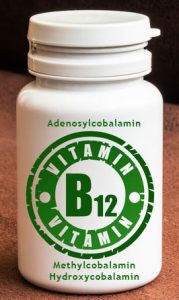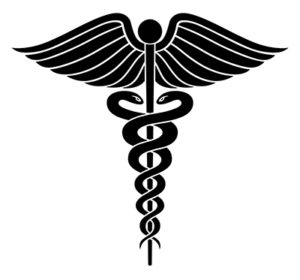Niacin – A Time Honored Treatment for Cholesterol and Triglycerides
Present day treatment with the most popular cholesterol lowering agents, called ‘statins,’ is far from ideal. In addition to the high costs, requirement of a doctor’s prescription, and side effects, intensive therapy is still associated with progression of artery disease based upon heart scans (serial electron beam tomography – EBT). A recent study using enough medication to reduce the total cholesterol close to an ideal level of 150 mg/dl unfortunately found a 7.5% to 11% increase in the progression of artery disease over a one year interval.
Without intervention it has been found that artery disease progresses at a rate of 24% to 52% per year based on a heart scan. The most optimistic report of the benefits of cholesterol-lowering therapy found that those people who were able to lower their LDL ‘bad’ cholesterol below 120 mg/dl showed a 7%/year decrease in artery disease compared to a 52%/year progression of disease in untreated patients based on a heart scan.
Niacin is a vitamin (vitamin B3, also called nicotinic acid). It was first introduced in 1954 as a lipid lowering agent and was the first drug found to prevent heart disease. Niacin has been found to be very effective at changing multiple cholesterol and triglyceride characteristics to more favorable forms – making it an ideal agent for treating some of the signs (risk factors) that predict your risk of a heart attack and stroke. By inhibiting the production of very-low-density lipoprotein in the liver and blocking the release of fatty acids from our body fat tissues (adipose tissues), it reduces the level of LDL ‘bad’ cholesterol. At the same time, it will lower triglycerides and raise HDL ‘good’ cholesterol. Niacin is the most potent drug available to raise HDL cholesterol.
Common Results:
LDL – down 10 to 25%
Triglycerides – down 20 to 50%
HDL – up 15 to 35%
More importantly, niacin has been shown to significantly reduce coronary events (like heart attacks) and total mortality – approximately a 27% reduction of both. Some evidence suggests that niacin therapy combined with a cholesterol binding agent (colestipol) is as effective, or maybe slightly better than, the ‘statins.’
Niacin is available in 3 formulations:
Immediate-release (IR)
Sustained-release (SR)
Extended-release (ER)
The side effects that most limit its use are flushing, which is most often seen with IR formulations, and hepatotoxicity (liver damage), associated with SR formulations. Niacin ER has a delivery system allowing absorption rates intermediate to that of niacin IR and SR. As a result, niacin ER achieves the efficacy of niacin IR with a reduced incidence of flushing and without the hepatic effects seen with niacin SR.
Side effects also include itching, rash, skin pigmentation, headache, abdominal pain, diarrhea, indigestion, nausea, vomiting, sore throat, runny nose, elevated liver function tests, and an increase in blood sugar and uric acid levels. With the older sustained-release (SR) forms, the risk of toxic effects on the liver is as high as 52% of patients using this formulation. (Liver toxicity is seen as a rise in common liver function tests – SGOT.) I recommend against using these formulations. Liver toxicity is an indication to stop using any form of niacin.
Many current recommendations are to not use niacin in patients with diabetes because of the effects on blood sugar. However, because of the benefits and only mild rises seen in blood sugar levels, many investigators are recommending its use in diabetes – certainly close medical-monitoring would be appropriate.
Based on efficacy and side effects the best preparation available today is Niaspan – an extended release (ER) form of niacin. This is a prescription medication, and considering the potential side effects of niacin, I usually recommend people have doctor’s supervision with regular check-ups on their cholesterol, triglycerides, blood sugar, and liver function tests. The dosage is begun at 500 mg in the evening and increased every 1 to 4 weeks by 500 mg until a maximum dosage of 2500 to 3000 mg daily is reached. This drug is found to be very effective at dosages of 1000 to 1500 mg per day. However, few benefits are seen after 2500 mg – so this should be the maximum dosage. With continued use most people develop a tolerance to the flushing – it disappears. Side effects can be reduced by taking niacin with food and by taking it 30 minutes after one adult aspirin.
The cost of 500 mg dosage of Niaspan is $25.97 for 30 capsules and $69.57 for 90 capsules from one on-line pharmacy. Niacin should be taken at bedtime as a single dose, because during the night (while sleeping) is when most of cholesterol and triglyceride synthesis takes place.
Immediate release (IR) niacin has 4 times more flushing reported with its use than does the ER form, but is much less expensive. A bottle of 100 capsules of 500 mg IR niacin can be purchased for about $8. I wholeheartedly support the use of the IR form (over the ER form) for people who can adjust to the side effects. Even though this form is sold without prescription, I recommend doctor’s supervision with its use because of the side effects.
Although niacin has been shown to reduce risk factors and to lower your risk of heart attacks and death, it should be used only as second-line therapy behind a low-fat, no-cholesterol diet, exercise, and clean habits. Diet and exercise have been shown to effectively reduce your risk of heart attacks and reverse the underlying disease of atherosclerosis – while at the same time being free of side effects and cost-free, and effective for many other health problems (obesity, diabetes, arthritis, high blood pressure, etc.). The reason diet and lifestyle are so effective is they correct the cause of the problems – and no one would be so naive as to believe heart disease is due to ‘niacin deficiency.’
* Statins commonly prescribed include: Zocor, Lescol, Pravachol, Lipitor, and Mevacor.
References:
1) Hecht HS. Comparison of the effects of atorvastatin versus simvastatin on subclinical atherosclerosis in primary prevention as determined by electron beam tomography. Am J Cardiol. 2003 Jan 1;91(1):42-5.
2) Callister TQ. Effect of HMG-CoA reductase inhibitors on coronary artery disease as assessed by electron-beam computed tomography. N Engl J Med. 1998 Dec 31;339(27):1972-8.
3) Canner PL. Fifteen year mortality in Coronary Drug Project patients: long-term benefit with niacin. J Am Coll Cardiol. 1986 Dec;8(6):1245-55.
4) Blankenhorn DH. Beneficial effects of combined colestipol-niacin therapy on coronary atherosclerosis and coronary venous bypass grafts. JAMA. 1987 Jun 19;257(23):3233-40.
5) Knopp R. Evaluating niacin in its various forms. Am J Cardiol. 2000 Dec 21;86(12A):51L-56L.
6) McKenney JM. A comparison of the efficacy and toxic effects of sustained- vs immediate-release niacin in hypercholesterolemic patients. JAMA. 1994 Mar 2;271(9):672-7.
7) Elam MB. Effect of niacin on lipid and lipoprotein levels and glycemic control in patients with diabetes and peripheral arterial disease: the ADMIT study: A randomized trial. JAMA. 2000 Sep 13;284(10):1263-70.
8) Grundy SM. Efficacy, safety, and tolerability of once-daily niacin for the treatment of dyslipidemia associated with type 2 diabetes: results of the assessment of diabetes control and evaluation of the efficacy of niaspan trial. Arch Intern Med. 2002 Jul 22;162(14):1568-76.
10) McDougall J. The McDougall Program for a Healthy Heart. Plume 1998.
Recommended Articles

What is the Best Formulation of Vitamin B12?

Giving Thanks





